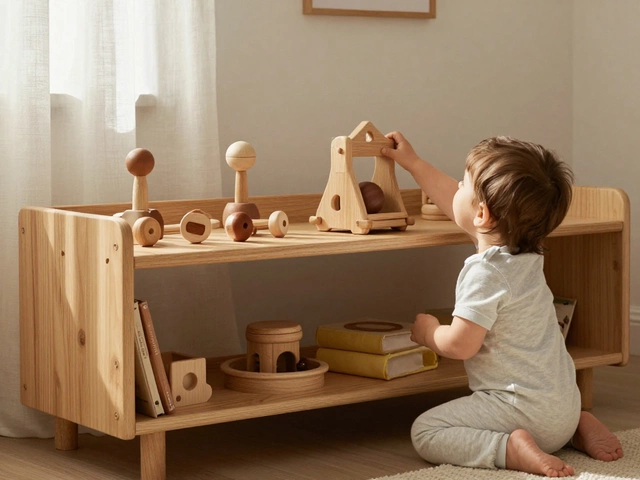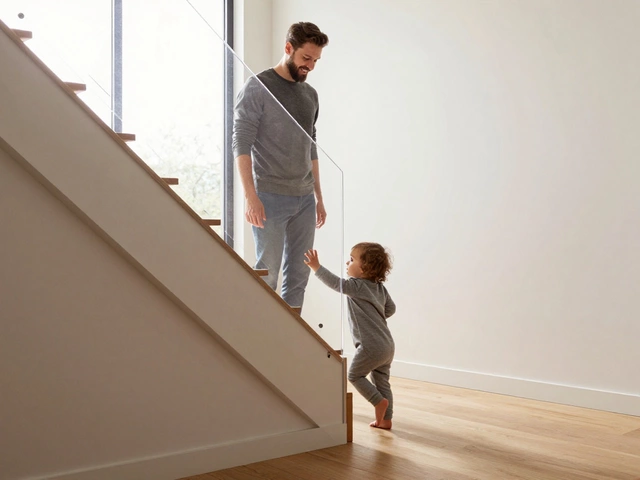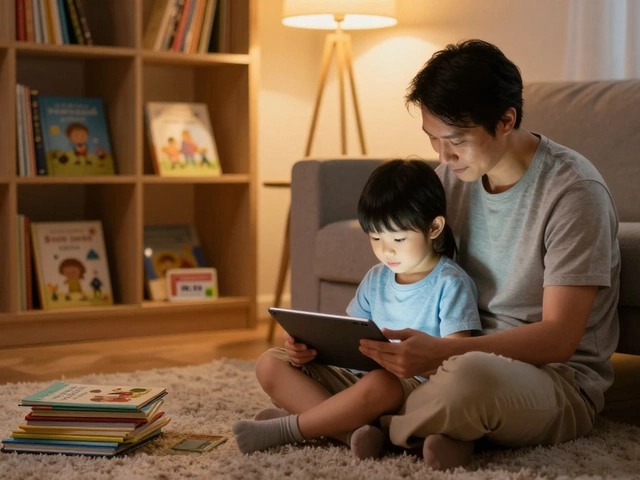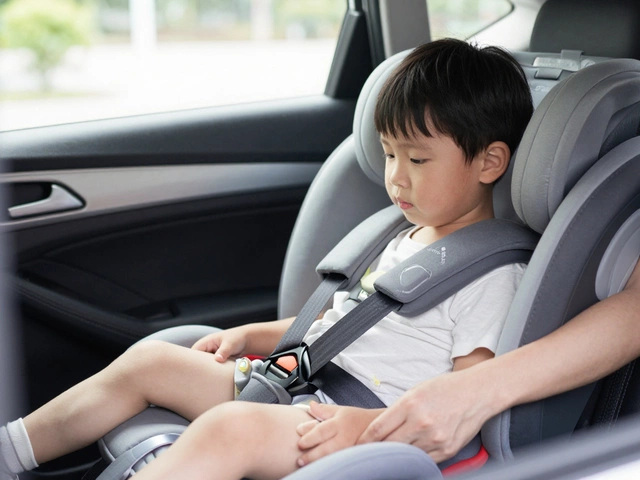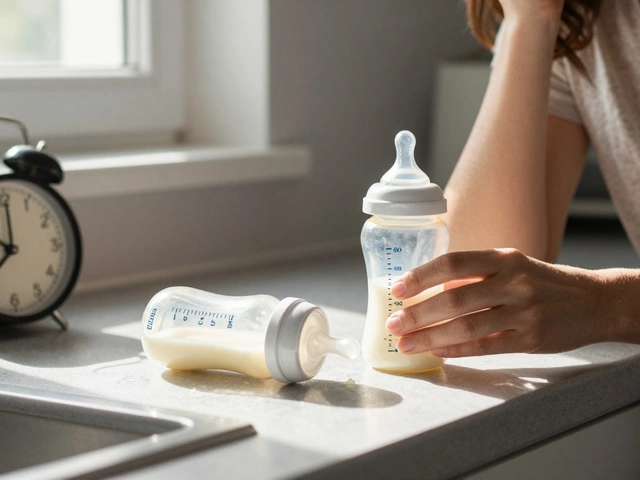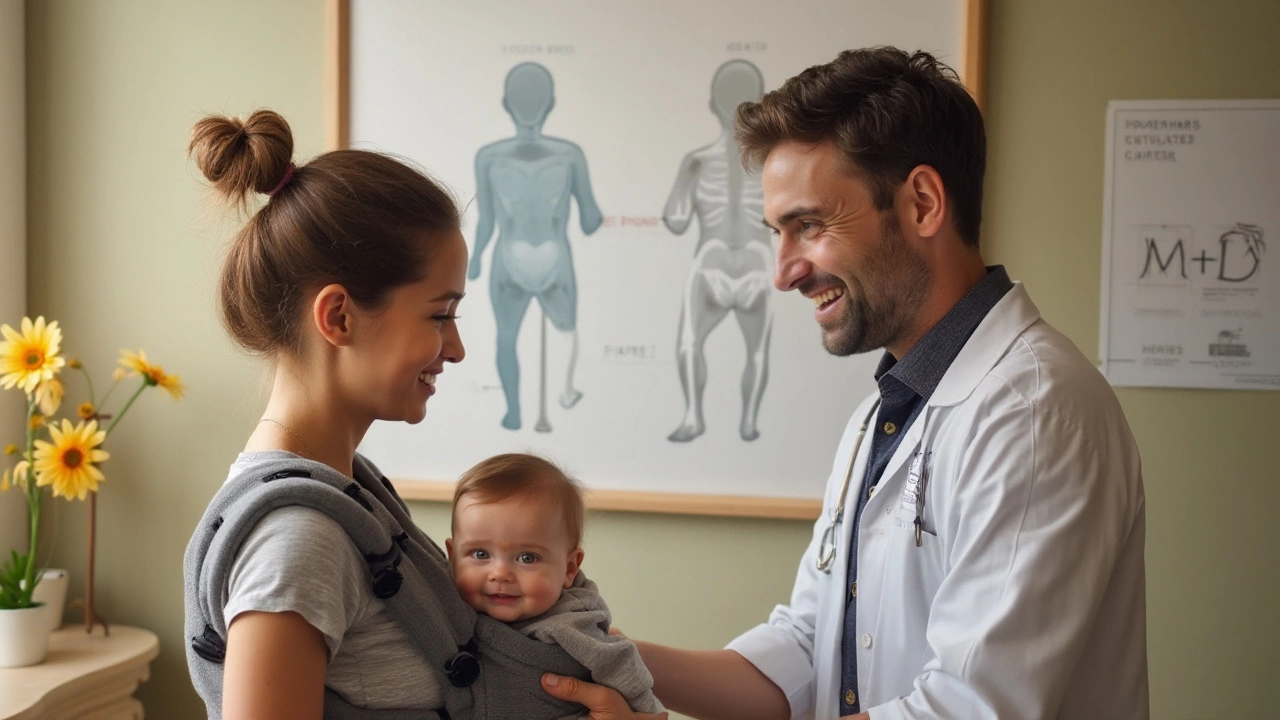
Parents often turn to baby carriers for the comfort and convenience they provide while keeping their little one close. However, some caregivers worry about the impact these devices might have on a baby's hip development. Are these concerns valid? Let's explore the possible effects of baby carriers on infant hip health and how to ensure your child is safe and secure.
As infants grow, their joints, especially the hips, undergo significant changes. Given this sensitive development phase, parents must be careful in choosing the appropriate carrier and using it correctly. Improper positioning can pose risks, but with informed choices, babywearing can be a rewarding experience for both parent and child.
- Understanding Hip Development in Infants
- Potential Risks of Baby Carriers
- Selecting the Right Baby Carrier
- Expert Tips for Safe Babywearing
Understanding Hip Development in Infants
In the early stages of life, a baby's body undergoes remarkable transformations, and their hips are no exception. It's important to grasp how these changes affect their mobility and overall health. At birth, an infant's hip joints are made up primarily of soft cartilage, which gradually ossifies into harder bone as they grow. The hip joint comprises a ball and socket structure, with the ball being the top of the thigh bone (femoral head) and the socket being part of the pelvic bone (acetabulum). For the joint to develop correctly, the ball should fit snugly into the socket, promoting healthy growth and stability as the child starts to move.
As infants spend a substantial amount of time lying or being carried, the positioning of their hips during these activities can have a significant impact. If the hips are kept in an improper position for extended periods, it may lead to complications such as hip dysplasia. This condition, known for the abnormal alignment of the hip joint, could hinder proper development. Knowledge about hip development helps parents and caregivers ensure that their baby's hips are positioned in a way that naturally encourages the right formation of the joint.
The importance of maintaining a healthy position for a baby's hips is widely recognized by pediatric experts. Dr. Charles Price from the International Hip Dysplasia Institute emphasizes,
"The infant's hips should be allowed to spread naturally apart and turn outwards. This position is similar to how many indigenous populations have traditionally carried their babies."The significance of this 'M' position, where the knees are higher than the bottom and the legs are spread out to form an 'M' shape, cannot be overstated. Such a position encourages proper alignment and reduces the risk of hip dysplasia.
During the first six months of life, an infant's hips are more malleable and susceptible to external influences. This is a crucial period for joint development, and it is when many pediatricians recommend parents pay close attention to how their baby is positioned, especially when using baby carriers or seats. As the baby grows, from about six months onwards, their hips begin to stabilize more, with bones becoming denser. Nonetheless, awareness and care in positioning still matter, as mobility and support during this period aid in more robust hip development.

Potential Risks of Baby Carriers
Parents often wonder about the potential risks of using baby carriers, and it's not an unfounded concern. One primary risk involves the possibility of compromising the developing hips of an infant, particularly during the early months of life. Hip dysplasia is a condition where the hip socket is abnormally shallow, which can be exacerbated by certain positions commonly found in some carriers. This is why proper ergonomics in babywearing are critical. The hips should ideally be in an 'M' position, where the knees are higher than the buttocks, promoting healthy joint development. If the positioning is off, it could lead to an increased risk of hip dysplasia or developmental issues. Understanding this can help parents make informed decisions.
Another concern is the duration and frequency of use. While babywearing offers convenience, continuous use for prolonged periods without breaks can put undue pressure on an infant's hips and spine. This is especially true if the carrier does not provide adequate support. Parents should carefully observe any signs of discomfort or unusual hip joint movements, adjusting use accordingly. A break every now and then, allowing the baby to stretch freely, can significantly offset possible risks. It's also vital to ensure that the carrier fits securely and correctly; a loose carrier can lead to imbalance and uncomfortable positioning.
Material and make of the carrier also play a part in potential risks. Some materials might not be breathable, posing risks of overheating. Exhausted from the sun’s warmth or heat retained beneath layers, a baby could face heat rashes or other discomforts. Ensuring that the fabric is breathable, particularly in hot climates, is essential. Parents often opt for carriers made from natural fibers for this reason. Alongside material choice, the design and how it conforms to a baby's natural shape make a big difference. Not every carrier design will suit every baby, so finding one that adapts well is key.
Secure attachment is crucial as well. Unstable seating can result in accidents or falls, leading to possible injuries. Studies have shown that ensuring the carrier is securely fastened around the parent can prevent such mishaps. An article in the Journal of Pediatrics outlined that proper fastening mechanisms significantly minimize the risk of falls. Ensuring that all straps are tight and no loose ends are dangling is a part of safe practice. To provide added peace of mind, always purchase carriers that meet safety standards established by recognized health and safety organizations. Consequently, choosing the right baby carrier isn’t just about style or brand but safety and suitability.
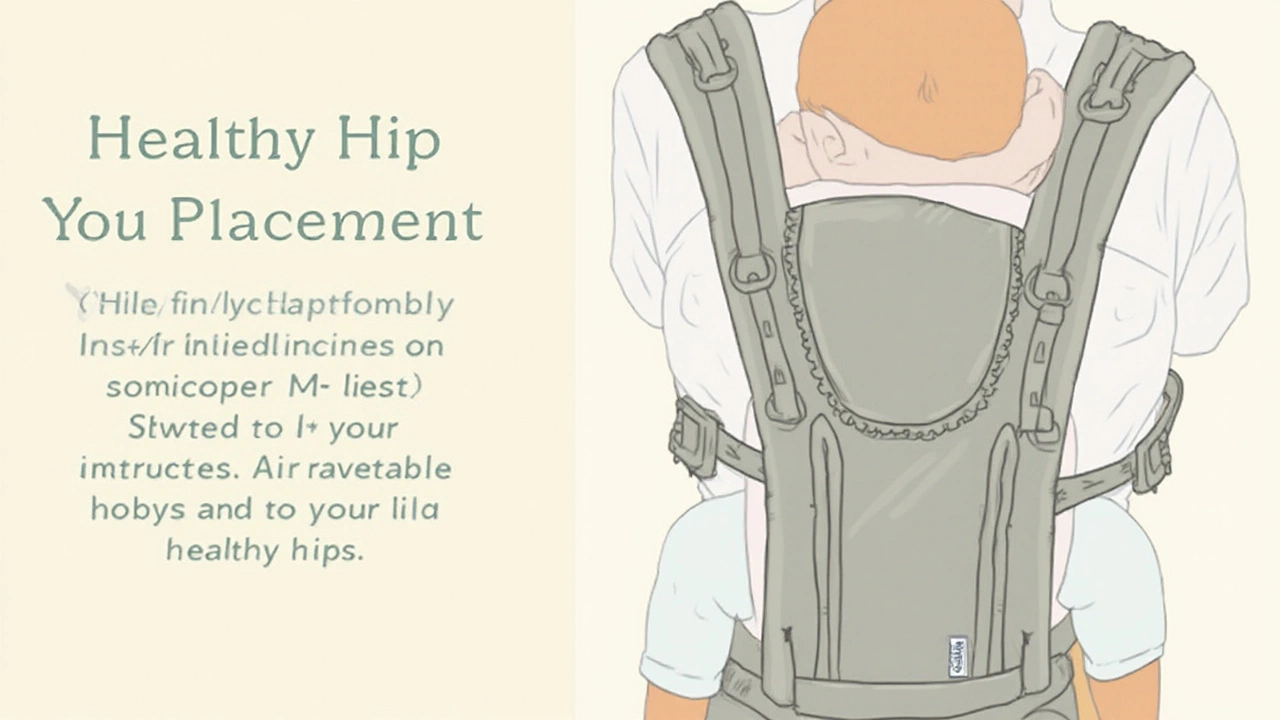
Selecting the Right Baby Carrier
When it comes to choosing the right baby carriers, parents have a host of options to consider, each with its unique design and functionality. The first thing to keep in mind is that not all carriers are created equal when it comes to supporting infant hip health. It's crucial to look for models that promote the healthy spreading of a baby’s hips, thighs, and spine. This means choosing carriers that allow the baby's legs to straddle the wearer, maintaining a natural 'M' position—think of a frog’s legs. Notably, the International Hip Dysplasia Institute endorses certain carrier styles for their ability to support hip integrity during this crucial growth stage.
Material and adjustability are two other key factors to consider. The fabric of a carrier should be both breathable and durable, ensuring comfort for both the wearer and the baby, regardless of the season. Adjustable straps and buckles are vital, allowing the fit to be customized as the baby grows. This not only enhances comfort but also ensures that hips are always positioned correctly. Given the wide array of options—wraps, slings, soft-structured carriers, and more—it’s often beneficial for parents to try different types in a store or borrow from friends to see what works best.
The American Academy of Pediatrics notes, "Choosing the right carrier involves considering your baby’s age, your planned activities, and whether you or others will be using it." This highlights the importance of considering both lifestyle and logistics in your decision. If two caregivers plan to alternate using the carrier, select one that can be easily adjusted between users to maintain hip support integrity.
It's also wise to be mindful of any changes in your baby’s behavior or comfort while using a carrier. Babies should not only be positioned properly to safeguard hip development but also be comfortable enough to sleep soundly during outings. If they show signs of discomfort—or if you find difficulty adjusting the carrier to the recommended positioning—it might be time to reassess your choice or consult with a pediatrician or a babywearing consultant for advice. Many communities offer babywearing workshops where experts can provide hands-on guidance on choosing and fitting carriers correctly.
Looking beyond comfort and development, safety features such as secure fastenings and supportive structures need to be prioritized. While many carriers on the market boast safety assurances, confirming compliance with recognized standards can offer peace of mind. Often, it's the attention to small details, like a well-padded headrest or a wide waistband that distributes weight evenly, that makes a significant difference in the babywearing experience. However, no matter how many positive reviews a carrier has, it's most important that it suits your child's individual needs and your lifestyle effectively.
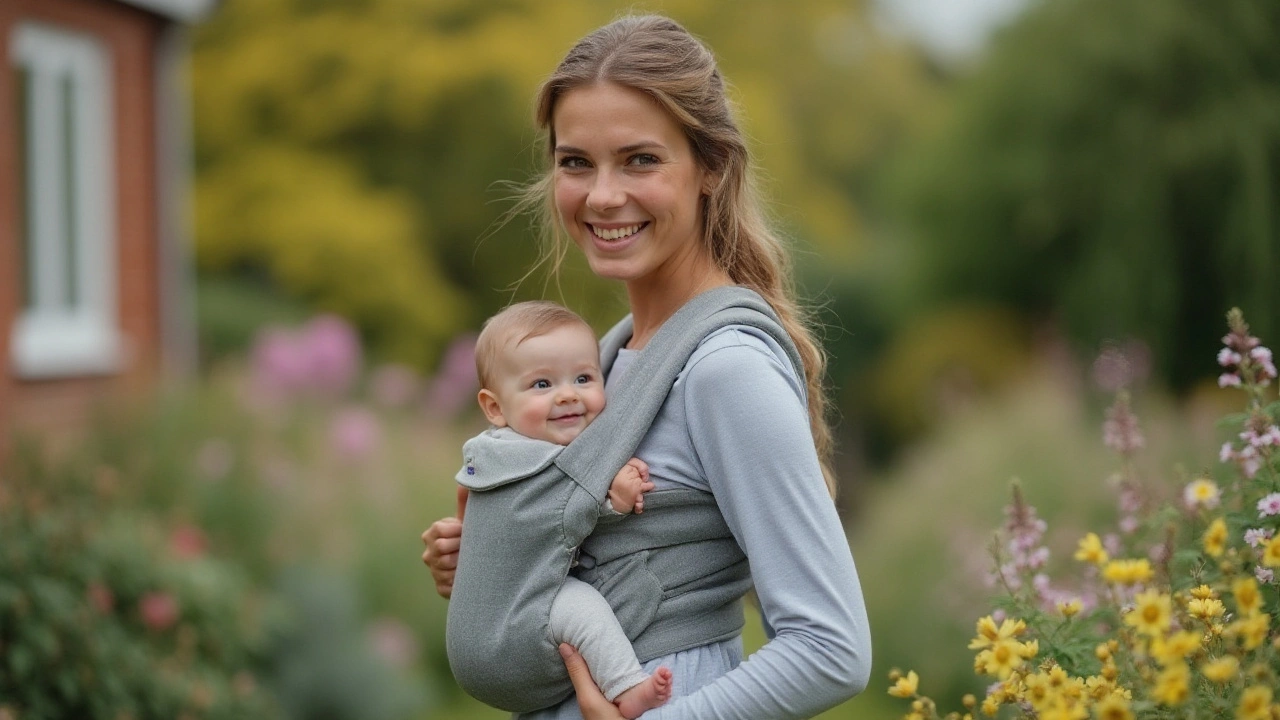
Expert Tips for Safe Babywearing
Embarking on the journey of babywearing can be both heartwarming and daunting for new parents. Ensuring your baby's hips remain healthy during this process involves several informed choices and practices. A key factor in promoting infant hip health while using a baby carrier is ensuring the device allows for proper hip positioning. The International Hip Dysplasia Institute recommends that babies be carried in a 'M' position where their knees are spread apart, higher than their buttocks, creating a gentle squat. This mimics the natural posture found in a mother's womb.
When selecting a carrier, look for those endorsed by healthcare experts or that carry a hip-healthy certification. These carriers typically feature wide-based designs that provide adequate support to your baby's thighs and buttocks. Before making a purchase, you should test the carrier's fit and adjustability. Parents often find that trying different styles—such as wraps, slings, or structured carriers—helps in determining the best safe option for their child. Ensure the model you choose supports both your comfort and that of your baby. After all, a snug carrier encourages bonding, making daily routines smoother and cherished.
"Babies who are properly carried tend to cry less and have improved sleep patterns," says Dr. Emily Rodriguez, a pediatric physical therapist. "The gentle swaying motion imitated in babywearing can be soothing for infants and reassuring for mothers."
Before putting your baby in their carrier, take time to read the manufacturer's guidelines on safe usage, paying close attention to the age and weight recommendations. You might join online parenting forums or social media groups, where experienced caregivers share insights about different versions and styles. Regardless of the type you choose, regularly check the condition of your carrier to ensure straps, buckles, and fabric are in good working order. Your baby's safety should remain the top priority, with vigilance over every tiny detail.
Additional Safety Tips for Parents
Besides selecting the right carrier, you can follow a few additional tips to amplify safety. Firstly, always make sure that your baby’s face is visible and free from obstructions. This helps monitor breathing and alerts us to any potential danger. It's also important to stay attentive to your surroundings when babywearing; remember, tasks that require bending or stretching might disrupt your baby's positioning. Also, don't neglect your own comfort. Adjusting the carrier to evenly distribute the baby's weight across your hips and shoulders can prevent back strain.
Moreover, keep in mind that babies, especially newborns, need periods outside the carrier throughout the day. Engage them with tummy time on a flat surface to encourage muscle development and growth. If used wisely, a baby carrier becomes a delightful tool not just for comfort, but for nurturing the orthodontic and developmental health of your treasured infant.


